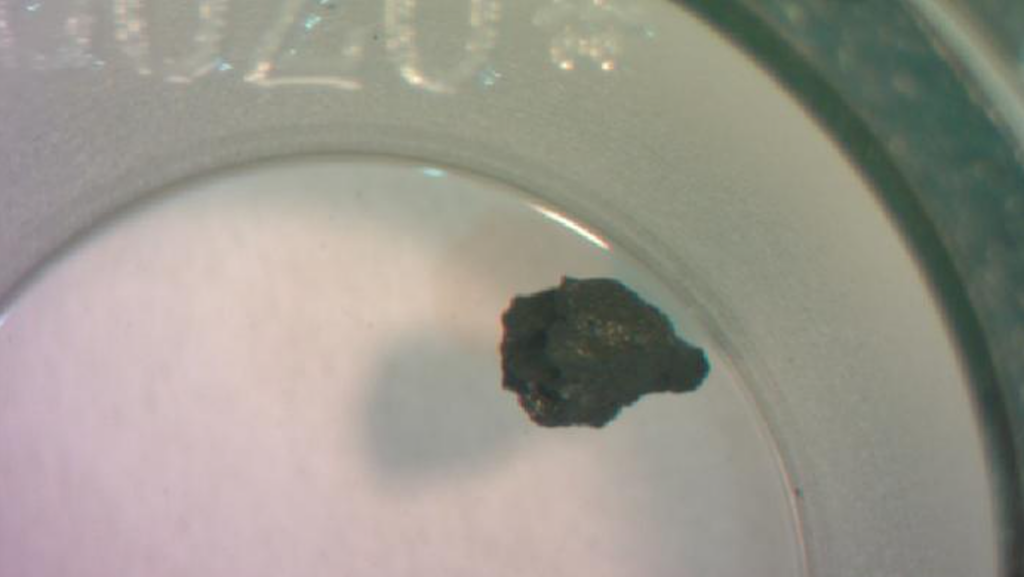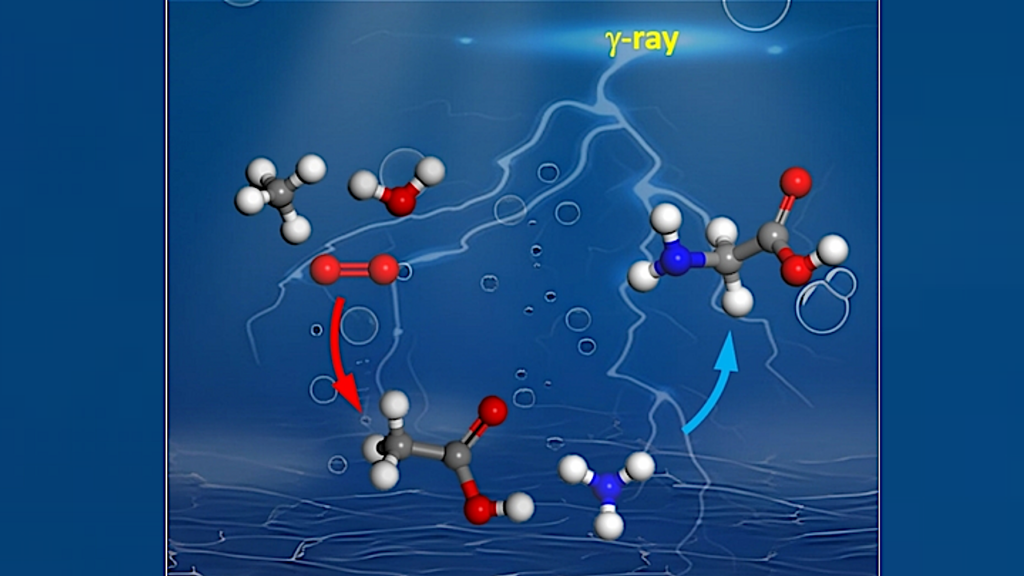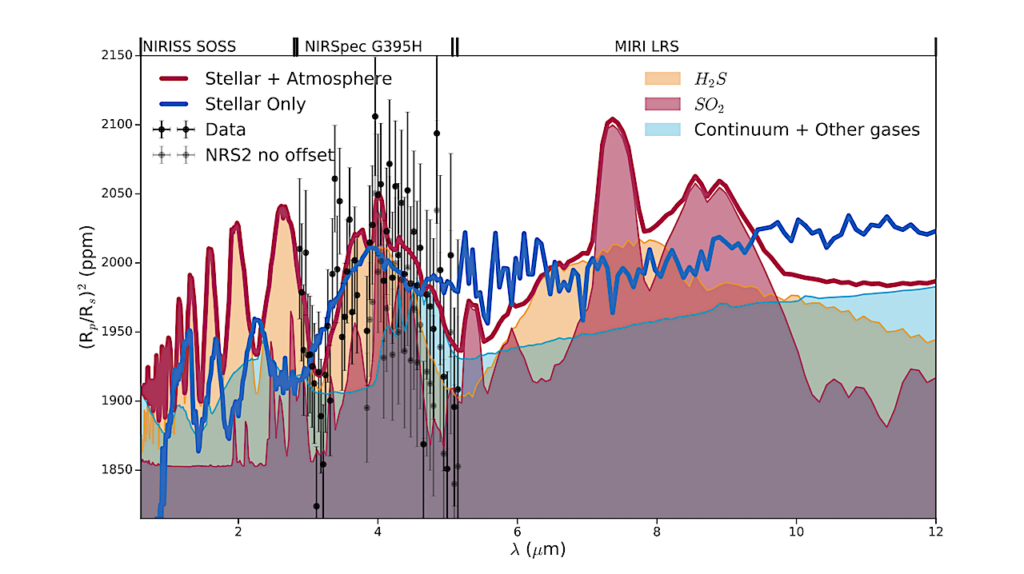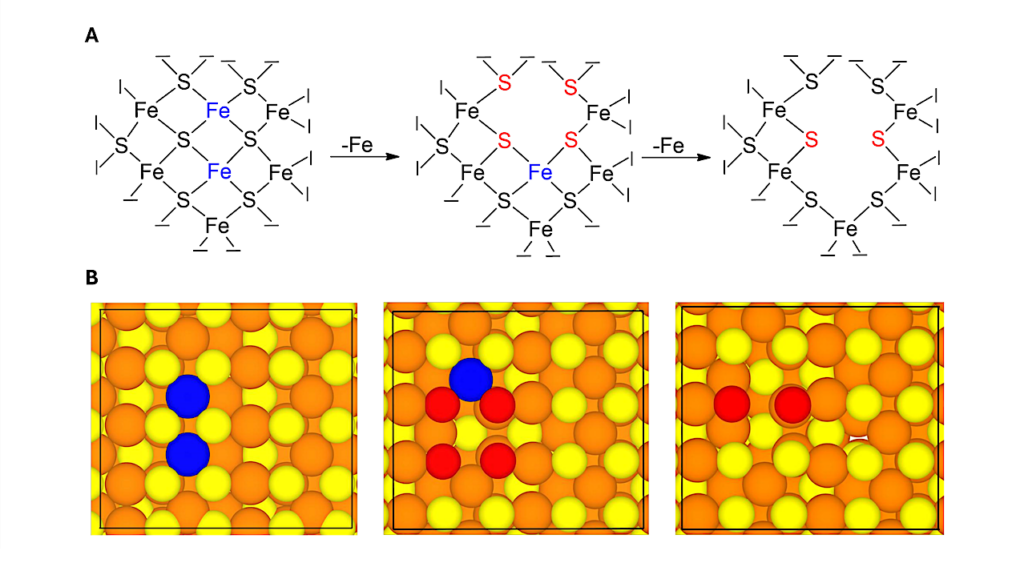Crash Chronicles: Relative Contribution From Comets and Carbonaceous Asteroids to Earth’s Volatile Budget In The Context of an Early Instability
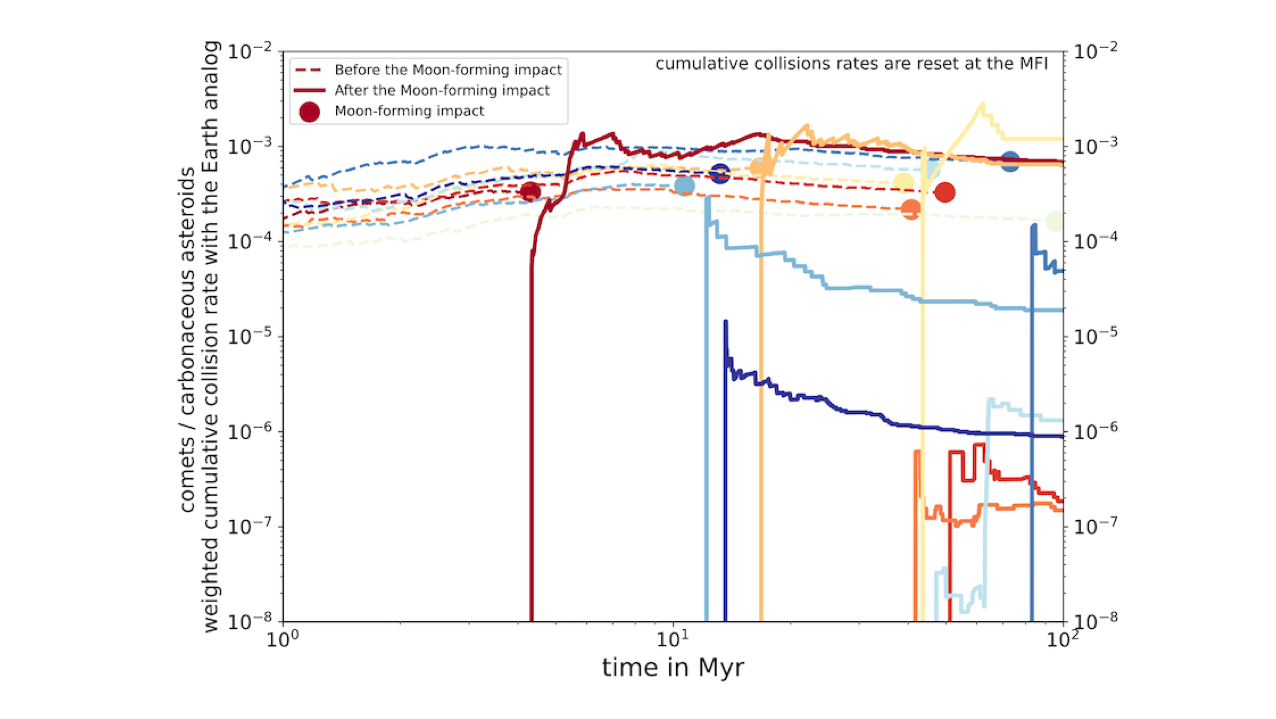
Recent models of solar system formation suggest that a dynamical instability among the giant planets happened within the first 100 Myr after disk dispersal, perhaps before the Moon-forming impact. As a direct consequence, a bombardment of volatile-rich impactors may have taken place on Earth before internal and atmospheric reservoirs were decoupled.
However, such a timing has been interpreted to potentially be at odds with the disparate inventories of Xe isotopes in Earth’s mantle compared to its atmosphere. This study aims to assess the dynamical effects of an Early Instability on the delivery of carbonaceous asteroids and comets to Earth, and address the implications for the Earth’s volatile budget.
We perform 20 high-resolution dynamical simulations of solar system formation from the time of gas disk dispersal, each starting with 1600 carbonaceous asteroids and 10000 comets, taking into account the dynamical perturbations from an early giant planet instability. Before the Moon-forming impact, the cumulative collision rate of comets with Earth is about 4 orders of magnitude lower than that of carbonaceous asteroids.
After the Moon-forming impact, this ratio either decreases or increases, often by orders of magnitude, depending on the dynamics of individual simulations. An increase in the relative contribution of comets happens in 30% of our simulations. In these cases, the delivery of noble gases from each source is comparable, given that the abundance of 132Xe is 3 orders of magnitude greater in comets than in carbonaceous chondrites. The increase in cometary flux relative to carbonaceous asteroids at late times may thus offer an explanation for the Xe signature dichotomy between the Earth’s mantle and atmosphere.
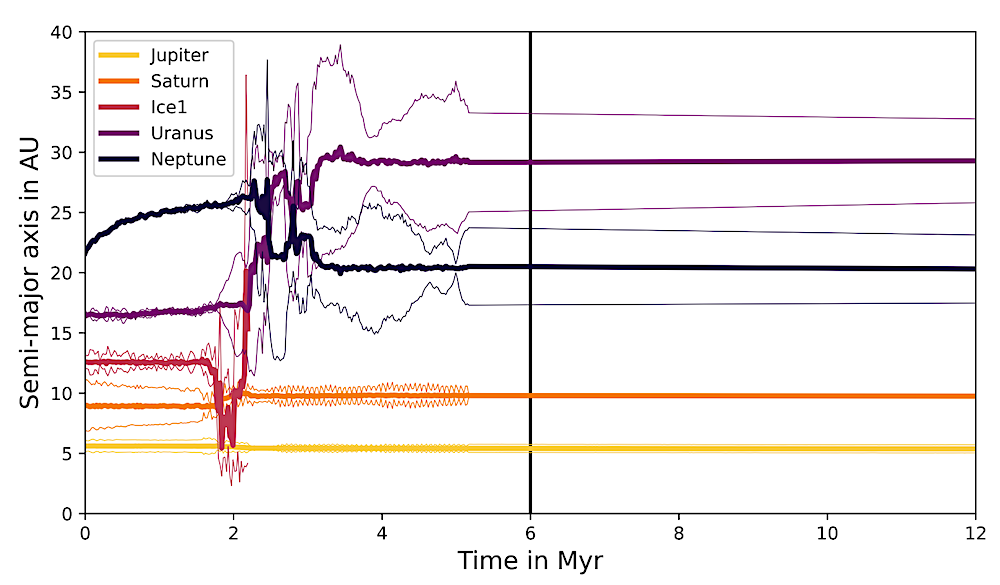
Early evolution of the giant planets in our simulations. The onset of the instability happens at tinst ≃ 2 Myr. The extra ice giant is ejected right after tinst and the four remaining giants start stabilizing again. The black vertical line indicates the starting point of the second interpolation during which the giant planets evolve smoothly towards their current orbit. We only show the dynamical evolution of the first ≃ 12 Myr for a visualization purpose. We refer the reader to Joiret et al. (2023) (Section 2.2.2) for more details about the instability. — astro-ph.EP

The symbol sizes are proportional to the mass of the bodies. Terrestrial embryos/planets and giant planets are in black, locally-sourced planetesimals are in red, carbonaceous planetesimals are in blue and comets are in dark blue. For the giant planets a fixed size was chosen so an not to fill most of the panels. — astro-ph.EP
Sarah Joiret, Sean N. Raymond, Guillaume Avice, Matthew S. Clement
Subjects: Earth and Planetary Astrophysics (astro-ph.EP)
Cite as: arXiv:2403.08545 [astro-ph.EP] (or arXiv:2403.08545v1 [astro-ph.EP] for this version)
https://doi.org/10.48550/arXiv.2403.08545
Focus to learn more
Journal reference: Icarus, Volume 414, 2024, 116032
Related DOI:
https://doi.org/10.1016/j.icarus.2024.116032
Focus to learn more
Submission history
From: Sarah Joiret
[v1] Wed, 13 Mar 2024 13:59:36 UTC (6,742 KB)
https://arxiv.org/abs/2403.08545
Astrobiology


